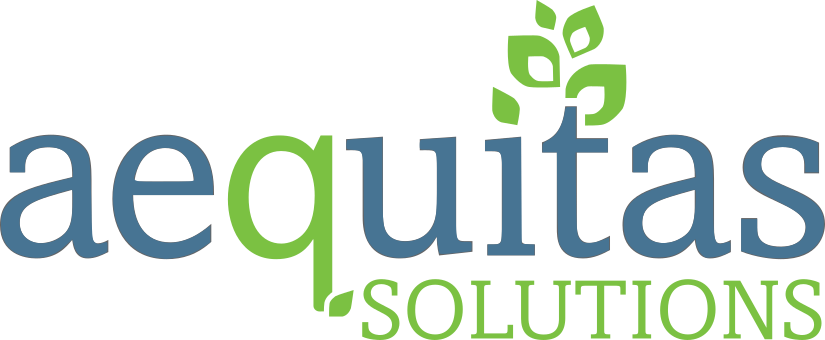Teachers have more tools at their disposal than ever to monitor student engagement and participation. One of the most powerful resources is the Student Information System (SIS). By leveraging data analytics within their SIS, educators can gain valuable insights into student performance, learning styles, and engagement levels.
Adopting a data-driven approach enables administrators and teachers to identify trends and patterns in student behavior, pinpoint areas where students may be struggling and implement targeted interventions to support student success. Data can also help teachers recognize and nurture individual strengths, providing tailored learning opportunities that allow each student to succeed.
In this blog, we will explore how teachers can effectively use data from their SIS to drive student engagement, create personalized learning experiences, and cultivate a classroom that encourages active participation and collaboration.
What is Student Engagement?
Student engagement can be measured by their interest, motivation, and enthusiasm toward their learning and school activities. It encompasses the level to which students are present and are actively involved in their educational experiences inside and outside the classroom. Engaged students are more likely to participate in discussions, collaborate with peers, and put effort into their studies.
Educators can view student engagement through three primary lenses:
Behavioral Engagement
This involves students’ participation in academic, social, and extracurricular activities. Behaviorally engaged students attend classes regularly, complete assignments on time, and are involved in school-related activities. Behavioral engagement also includes students’ interactions with peers and teachers and how well they follow classroom norms and rules.
Emotional Engagement
Emotional engagement refers to students’ feelings and attitudes toward their school, classes, teachers, and peers. It includes a sense of belonging, interest, and enjoyment in learning activities. Emotionally engaged students are more likely to have positive relationships with their teachers and classmates and feel a sense of belonging in the school community.
Cognitive Engagement
Cognitive engagement is the investment of mental effort and thought in learning. It involves students’ willingness to go beyond the surface of lessons, engage in critical thinking, and tackle challenging problems. Cognitively engaged students are motivated to set goals, seek deeper understanding, and apply what they learn to real-world situations.
Fostering student engagement is crucial for promoting academic success and long-term achievement. Engaged students are more likely to develop a love for learning, overcome challenges, and gain the skills necessary for future success.
How to Measure Student Engagement
Measuring student engagement is done by evaluating factors that reflect students’ involvement, motivation, and educational experiences. By using qualitative and quantitative methods, educators can gain insights into student engagement levels and identify areas for improvement.
Below are some practical ways teachers can measure student engagement.
Classroom Observations
Observations allow educators to evaluate student behavior and participation directly. Teachers can utilize structured tools, like checklists and rubrics, to document student interactions, attentiveness, and involvement in learning activities. This approach provides insights into behavioral engagement and helps identify students needing additional support or encouragement.
Student Feedback
Gathering feedback from students about their learning experiences and classroom environment can provide valuable insights into their engagement levels. Educators can collect feedback through informal discussions, suggestion boxes, or forms and surveys. By listening to their students, educators can better understand their needs and preferences to create a more engaging learning environment.
Academic Performance and Attendance
Analyzing academic performance and attendance data can also help measure student engagement. Consistently high grades, regular attendance, and timely assignment completion are indicators of behavioral and cognitive engagement. Patterns of absenteeism or declining grades may signal disengagement, allowing teachers to investigate the underlying causes and implement targeted interventions.
Engagement Analytics
Many SIS platforms offer analytics tools that track student engagement metrics. These tools can provide data on students’ participation in online discussions, assignment submissions, and interaction with learning materials. Data analytics also offer real-time insights to help teachers identify students who may benefit from additional support.
Self-Assessment and Reflection
Encouraging students to self-assess their engagement and reflect on their learning experiences can promote self-awareness and accountability. Self-assessment tools, such as engagement journals or reflection prompts, allow students to evaluate their level of participation, identify areas for improvement, and set goals for improvement.
Data-Backed Student Engagement Strategies
Data analytics in education involves collecting and using information to make informed decisions that enhance teaching and learning. Using their SIS, teachers can employ several data-backed strategies to drive student engagement and participation.
Personalizing Learning Experiences
Engaging students requires personalization. Teachers can identify individual learning needs by analyzing academic performance and tailoring instruction accordingly. For example, a student struggling with math but excelling in reading might receive additional math support and advanced reading materials. This personalized approach ensures students work at challenging yet achievable levels, enhancing motivation and engagement.
Monitoring and Improving Attendance
Attendance is another factor that significantly impacts student success. Tracking attendance data helps identify patterns of absenteeism and enables early intervention. Improved attendance leads to better academic outcomes and consistent student engagement.
Teachers can set up chronic absenteeism dashboards to effectively monitor attendance and gain visibility of students struggling to attend school. Struggling students can then receive targeted support to help improve their attendance. Incentive programs that reward good attendance can also motivate students.
Enhancing Student Participation
Teachers can use engagement metrics from their SIS to encourage more active class participation. By understanding which students are less involved in classroom activities and discussions, teachers can create opportunities for these students to participate more actively.
For instance, a teacher might assign roles in a group project that align with each student’s interests or strengths, encouraging them to contribute. Designing collaborative learning experiences, like group projects that require input from all students, can also ensure that everyone has a chance to contribute.
Leveraging Data-Centric Technology for Student Engagement
Integrating data analytics technology with the SIS enables teachers to analyze and visualize data more effectively. Below are some technological tools and strategies that can aid in this process.
Data Dashboards
Data dashboards are intuitive, visual presentations of student data. These data dashboards make it easier for teachers to identify trends and patterns amongst their students. These dashboards typically include performance and engagement indicators such as attendance rates, grades, and behavior incidents, helping teachers make informed decisions about their instructional strategies.
Teachers can enhance their use of dashboards by customizing them based on their specific needs and focus areas. For example, teachers interested in monitoring reading progress might configure their dashboard to highlight reading assessment scores and related data. Choosing systems that offer robust data interfaces ensures teachers can access the information to help them evaluate student engagement in real-time, enabling more timely interventions and tailored instructional strategies.
Predictive Analytics
Predictive analytics uses historical data to forecast future outcomes. Teachers can use predictive analytics to identify students at risk of falling behind and implement proactive interventions. For instance, predictive models can analyze student performance and attendance data to predict which students are at risk of academic failure or dropping out.
By developing predictive models that use SIS data to identify at-risk students, teachers can provide resources and proactive support to improve student outcomes for those most in need of help. Creating early intervention strategies, such as tutoring, mentoring, and additional support services, can help these students stay on track and improve their engagement and participation.
Improving Student Engagement with Data
By harnessing the power of data, teachers can unlock a world of possibilities for enhancing student engagement. A robust Student Information System provides the foundation for a data-driven approach that empowers educators to personalize learning, improve attendance, foster participation, and create a positive classroom environment.
Understanding and utilizing the data available within their SIS allows teachers to make informed decisions that positively impact student outcomes. This data-driven approach complements traditional teaching methods with actionable insights to create a more successful learning environment.
Ready to transform your district with data? Discover how our Student Information System can help you unlock students’ full potential. Contact us today to learn more about our comprehensive data-driven solutions.


